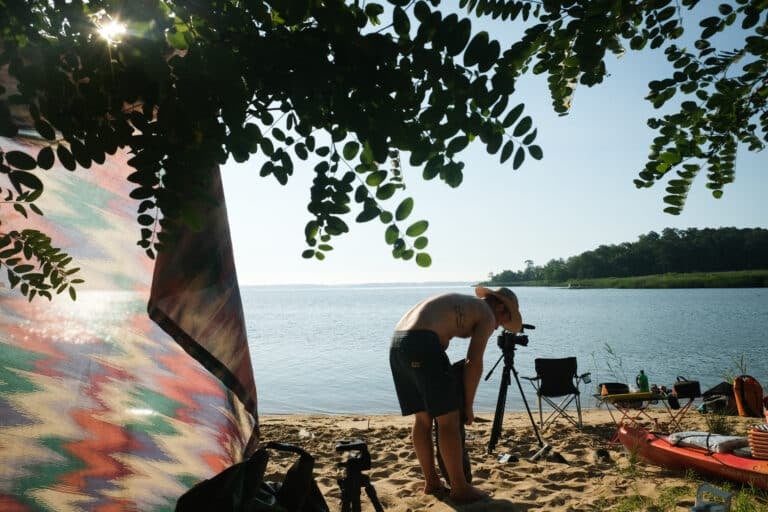 Audrey Peterman is an avid environmentalist and backpacker who, along with her husband Frank, has devoted her adult life to increasing the cultural diversity in the outdoors. Living in Atlanta, Audrey is on the Board of Trustees for the National Parks Conservation Association, and her husband Frank is the Southeast Regional Director of the Wilderness Society and Together they publish Pickup and Go!, a monthly newsletter designed to increase awareness of the outdoors within the African American community. They also take groups of urban youth and adults on backcountry trips into our national parks.
Audrey Peterman is an avid environmentalist and backpacker who, along with her husband Frank, has devoted her adult life to increasing the cultural diversity in the outdoors. Living in Atlanta, Audrey is on the Board of Trustees for the National Parks Conservation Association, and her husband Frank is the Southeast Regional Director of the Wilderness Society and Together they publish Pickup and Go!, a monthly newsletter designed to increase awareness of the outdoors within the African American community. They also take groups of urban youth and adults on backcountry trips into our national parks.
Is the lack of cultural involvement in the outdoors painfully obvious to you?
AP: After Frank and I married, we toured America’s national parks. Imagine our amazement to see nobody who looked like us in terms of ethnicity in the 14 national and state parks we visited. Except for a young lady on a bus trip in Acadia and a couple in the campgrounds of Olympic National Park, we saw no other African Americans, and very few Asians and Latinos. In fact, the visitors were almost uniformly white.
Why do you think so few African Americans experience the outdoors?
AP: When we had told our relatives and friends that we planned to drive around the country, hiking and camping in the woods, the alarm was palpable. They couldn’t understand how Frank, who had been through the Civil Rights Movement and seen some dastardly acts of racism against black people, could entertain such a crazy idea. Lynchings. Ku Klux Klan activity. Being beaten up and living to tell about it. The stories of the recent past were vivid in many people’s minds, and the “woods” was a place to be avoided at all costs. Straight from our trip, where all our experiences had been stratospherically positive, we realized that the black perspective on the outdoors did not coincide with today’s reality.
What sort of difference does hiking have on these kids you’re involved with?
AP: Until President Obama’s election, taking people of color outdoors was the single most powerful prod to their self esteem and independence. In 2000 we took a group that included young people from the grittiest areas of Los Angeles to tour Zion, Bryce and the Grand Canyon National Parks. The trip was covered by NBC in Miami. The most poignant moment was when one of the young men being interviewed, who had described how every time he stepped out his front door he faced the threat of being shot dead, blurted out, “How come all these German and Japanese people that are here know about these places, and we didn’t? People in my community need to see these places, to understand that there is more to the world than going from the courthouse to the prison. I feel that God must love me so much to allow me to see these places. He made them, and He made me. That means I must be worth something.”
How important is it that more African Americans begin participating in the outdoors?
AP: The environment will be on the losing end if it does not immediately and aggressively include populations of color. A study published in 2008 showed that 72 percent of employees in the National Park Service are white. Visitorship and use of the parks is minimal among people of color. Our public lands are for us all to enjoy and treasure.







